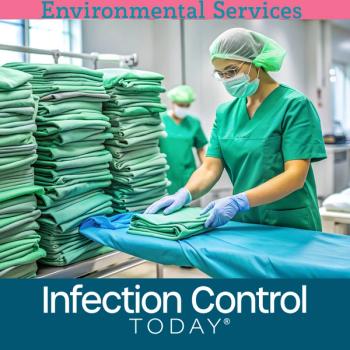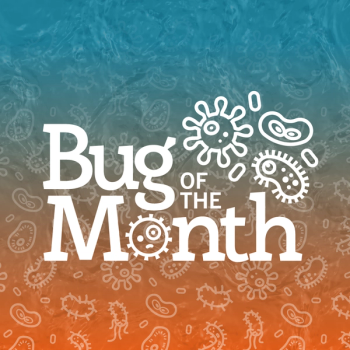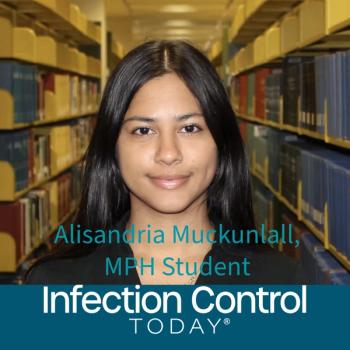
Considerations for Immunization Programs
Considerations for Immunization Programs
By Sue Sebazco, RN, BS, CIC
A well-plannedand implemented immunization program is an important component of a healthcare organization's infection prevention and control program. These programs should address the immune status of not only the healthcare worker, but consideration should also be given to a program that addresses the immune status of the individuals served. When planning these programs, valuable resources are available from the Advisory Committee on Immunization Practices (ACIP) and the Hospital Infection Control Practices Advisory Committee (HICPAC).1,3 Also, there are chapters on immunization programs by recognized experts in this field that have been included in published works on infection control.2 Detailed information on each vaccine is outlined in these resources and those individuals planning the organization's immunization program need to adapt these recommended practices to their individual setting. The characteristics of the healthcare workers employed and the individuals served should be taken into account. Another major consideration would be the requirements of regulatory agencies and local, state, and federal regulations.
Who should be included?
In their recommendations for immunization of healthcare workers, ACIP and HICPAC identify the healthcare workers whose maintenance of immune status is important.1 These are: physicians, nurses, emergency medical personnel, dental professionals and students, medical and nursing students, laboratory workers, hospital volunteers, and administrative staff. These individuals are recognized for being at risk for exposure to and possible transmission of diseases that can be prevented by immunizations. The healthcare organizations that need to design an immunization program would be any facility that provides direct patient care.
What immunizations should be included?
The ACIP/HICPAC recommendations are divided into three categories: 1) immunizing agents strongly recommended for healthcare workers; 2) other immunologics that are or may be indicated for healthcare workers; 3) other vaccine-preventable diseases.1 Obviously, all healthcare organizations should include those immunizations that are strongly recommended. To determine whether or not to include those immunologics that may or may not be included, the incidence of the vaccine-preventable diseases within the community served needs to be reviewed. Also, comparing the demographics of the workforce pool with the disease pattern within the community will determine which of these immunologics are indicated for the specific organization's program. There are those vaccines that may not be routinely administered, but may be considered following an injury or exposure incident or for immunocompromised or older healthcare workers.
What are the vaccines that are strongly recommended? The ACIP/HICPAC recommendations determine which vaccines are included in this category based on documented nosocomial transmission and significant risk for acquiring or transmitting these diseases.1 These vaccine-preventable diseases are hepatitis B, influenza, measles, mumps, rubella, and varicella. Following are some factors that support their inclusion in an immunization program.
Hepatitis B:
Prior to the advent of the hepatitis B vaccine, the No. 1 occupationally acquired infection in healthcare workers was hepatitis B. In 1993, there was a 90% decrease from the 1985 number of estimated workers to have been infected. The Occupational Safety and Health Administration issued the Federal Standard in 1991 mandating employers to provide the hepatitis B vaccine to all employees who have or may have occupational exposure to blood or other potentially infective materials. The vaccine is to be offered at no expense to the employee and, if the employee refuses the vaccine, a declination form must be signed.
Influenza:
Influenza has been demonstrated to be transmitted in healthcare facilities during community outbreaks of this disease. Annual influenza vaccination programs are carried out in the fall. Those that immunize both the healthcare worker and the individuals served have been extremely effective in reducing morbidity and mortality and staff absenteeism. It has been demonstrated that when the vaccine is available free to the healthcare worker and at a convenient location and time, the number of recipients increases significantly.
Measles:
During 1985-1989, 3.5% of all reported measles cases occurred in medical settings. In the reported cases during 1992-1995, when the setting of the transmission was known, 13.9% of the reported cases were also in the medical setting. Also of note, is that it is estimated that the risk for measles infection in healthcare personnel is 13 times greater than for the general population. Serologic studies performed on hospital workers show that 5 to 9% of those born before 1957 are not immune to measles even though they are generally considered immune. Therefore, this population among the workers within the facility warrants consideration for vaccination when they lack proof of immunity.
Mumps:
There have been reports of mumps transmission within the medical settings. Programs that ensure that the worker is immune to mumps are easily linked with measles and rubella control.
Rubella:
Vaccination programs have significantly decreased the overall risk for rubella transmission in all age groups. All workers who are likely to have contact with pregnant women should be immune to rubella. Since it is not harmful for people who are already immune to measles, mumps, or rubella to receive the vaccine, the trivalent MMR (Measles, Mumps, Rubella) should be given rather than the monovalent vaccine.
Varicella:
Post-exposure procedures to varicella zoster virus are usually costly and disruptive to a healthcare organization. A program that identifies susceptible workers, patients, and visitors, applies restrictions when necessary, and provides the immunization can contribute to the prevention of having to manage such exposure incidents.
Which vaccines?
The diseases that are included under this category are those identified where nosocomial transmission occurs, but healthcare workers are not at increased risk because of occupational exposure.1 Also, occupational risk may be high, but protection via active or passive immunization is not available. Another reason is that vaccines are available but are not routinely recommended for all healthcare workers or are recommended only in certain situations.
Hepatitis A:
Standard precautions are recommended and commonly a part of the healthcare facilities' isolation practices in the US. When followed, nosocomial transmission of the hepatitis A virus is rare.3 Also, most patients hospitalized with hepatitis A are admitted when they are beyond the point of peak infectivity, which is after the onset of jaundice. Healthcare workers have not demonstrated an elevated prevalence of hepatitis A virus when compared to other occupational groups that were serologically tested. In communities that have high rates of hepatitis A or are experiencing an outbreak, there may be a need to consider immunizing the healthcare-worker population in certain settings. This vaccine has also been recommended for pre-exposure prophylaxis for the following groups who may be included in a healthcare-worker population:
- Those who travel to an endemic country.
- Male homosexuals.
- Household and sexual contacts of people infected with hepatitis A.
- Those with contact with active cases.
- Laboratory workers who handle live hepatitis A virus; workers and attendees at daycare centers where attendees wear diapers; food handlers, staff, and residents of institutions for the mentally handicapped; chronic carriers of hepatitis B; people with chronic liver diseases.3
Meningococcal disease:
Routine vaccination of healthcare workers against meningococcal disease is not recommended. If an outbreak of serogoup C meningococcal disease is identified, then use of the meningococcal vaccine may be warranted.
Pertussis:
There is not a vaccine against pertussis that is licensed for use in an adult population. If one becomes available in the future, booster doses of adult formulations may be recommended because pertussis is highly contagious.
Typhoid:
Typhoid vaccine should be administered to workers in microbiology laboratories who frequently work with Salmonella typhi.
Vaccinia:
Vaccinia vaccine should be administered to the few people who work with orthopoxviruses, such as in laboratory workers who directly handle cultures or animals contaminated or infected with vaccinia.
Others
Other diseases are diphtheria, pneumococcal disease, and tetanus. Because healthcare workers are not at an increased risk for acquiring these diseases over the general population, they should seek these immunizations from their primary-care provider.
What are some of the important administration practices that need to be followed in an immunization program? The manufacturers' prescribing information should be followed for storing, dosing, and administering all vaccines.2 This will ensure maximum safety and efficacy. It should be noted that MMR should be used within eight hours of reconstitution and the Varicella vaccine within 30 minutes. In adults, the preferred vaccination site is the deltoid area for both the IM and SQ injections. An adequate needle length must be used to ensure deep IM injection, avoid local irritation, and maximize immunogenicity. Vaccination information statements that present required points must be given before the vaccine is administered. Also, an informed consent form should be signed. Vaccination information statements are readily available in several languages from the National Immunization Program's Web site http://www.cdc.gov/nip. Any adverse event associated with a vaccine should be recorded and reported. Those designated to administer the vaccines must have knowledge about each vaccine and the contraindication associated with each vaccine and trained in proper administration technique.
Because of the multifaceted components of personnel health programs, those administering vaccinations need to know about spacing with other immunobiologics. For example, because the administration of the measles vaccine causes temporary mild immunosuppression, this may cause a false-negative purified protein derivative (PPD) skin test for up to six weeks after receiving the vaccine.
What about immunizing the immunocompromised healthcare worker? Since a physician must assess the degree to which an individual is immunocompromised, the worker's physician should be consulted about whether or not the worker should receive the immunization in question. It is always prudent to receive written clearance from the worker's physician. There is a resource available from ACIP with recommendations for immunization of immunocompromised people.4
How can compliance be encouraged and enforced? There are many examples of reluctance among healthcare workers to receive vaccinations. This occurs for a variety of reasons, most of which are based on their misconceptions or misperceptions about immunizations. Some just fear the "needle" and will avoid any situation that involves its use. The ACIP has compiled a list of misconceptions concerning contraindications to immunization, which includes adverse reactions, or potential complications that have yet been verified.2 Also some people may be confused regarding appropriate indications and exclusions for various reasons. For example, vaccines can be administered while breastfeeding, whereas, the use of live, attenuated viral vaccines during the first trimester of pregnancy is contraindicated.
Policies that address a mandatory program vs. a voluntary program need to be put into place with administrative advice and support. If there is a voluntary program, consideration must be given to work restriction in certain areas and under certain circumstances.
When should the immune status of the healthcare worker be determined? The ideal time to determine the immune status of the healthcare worker is at the time of pre-placement assessment following a job offer, acceptance as a volunteer, or as part of the application process for the medical staff. Provisions should be in place to ensure that temporary and contract workers are in compliance with the organization's immunization program. Periodic review may be necessary when new recommendations are made.
How can the cost of an immunization program be justified? A goal of any healthcare organization should be to have a safe environment not only for its workers, but also for those served by the organization. The cost of an immunization program can be justified by demonstrating the cost of prevention vs. the cost of working up an exposure or outbreak from a vaccine-preventable disease.
How can the immunization program address the immune status of the individuals served? Programs are in place in all medical settings that determine the immune status of their patients/residents/clients at the time of admission to their facility. Healthcare organizations have implemented protocols to offer and administer the needed vaccines while under their care. Two recent documents published by CDC in a recent issue of"MMWR Recommendations and Reports" on March 24, 2000, address strategies to increase adult immunization rates. One is a report from the National Vaccine Advisory Committee(NVAC) titled Adult Immunization Programs in Nontraditional Settings: Quality Standards and Guidance for Program Evaluation. The other is recommendations of ACIP on Use of Standing Orders Programs to Increase Adult Vaccination Rates. Both of these documents are available as a combined camera-ready document(PDF format) at
Another important consideration when developing an immunization program is maintenance of a vaccination record that reflects documented disease and vaccination histories for the workers that is updated with each immunization. In its recommendations for infection control in health care personnel, CDC's HICPAC includes an immunization program in its elements for a personnel health service.5
Susan Sebazco, RN, BX, CIC is currently the Infection control/Employee Health Director for Arlington Memorial Hospital (Arlington, Tex).
For a list of references, go to
Newsletter
Stay prepared and protected with Infection Control Today's newsletter, delivering essential updates, best practices, and expert insights for infection preventionists.





